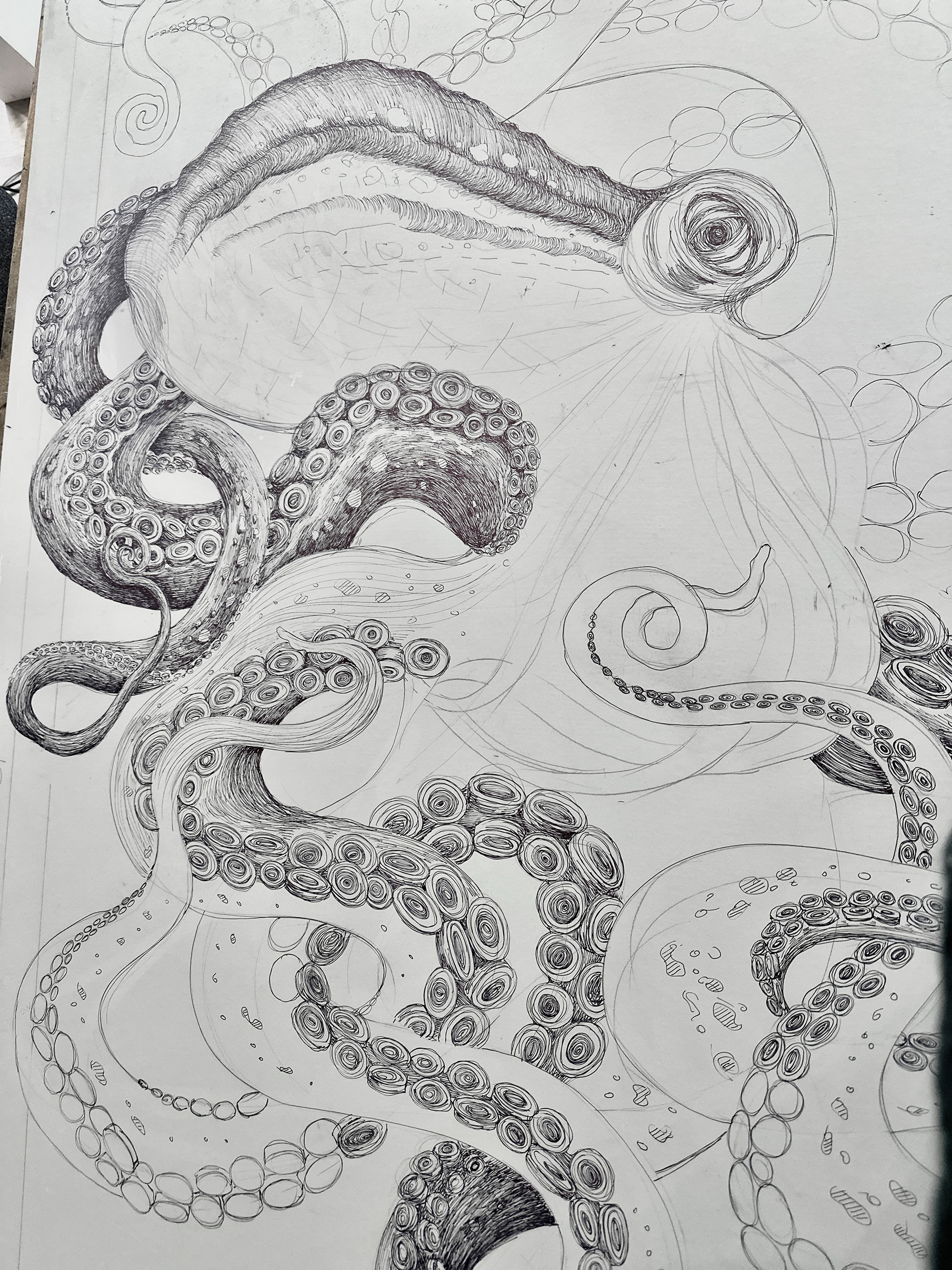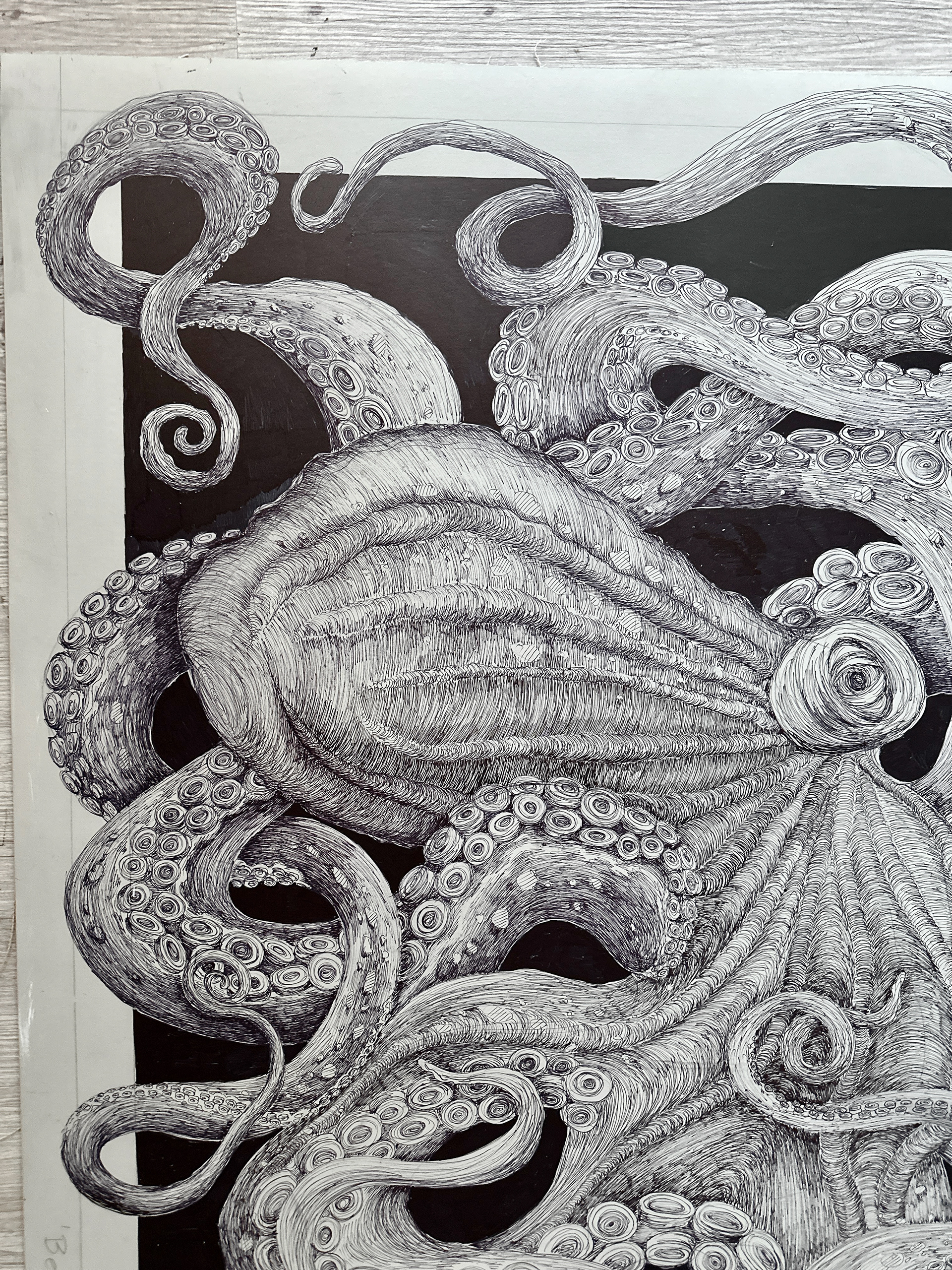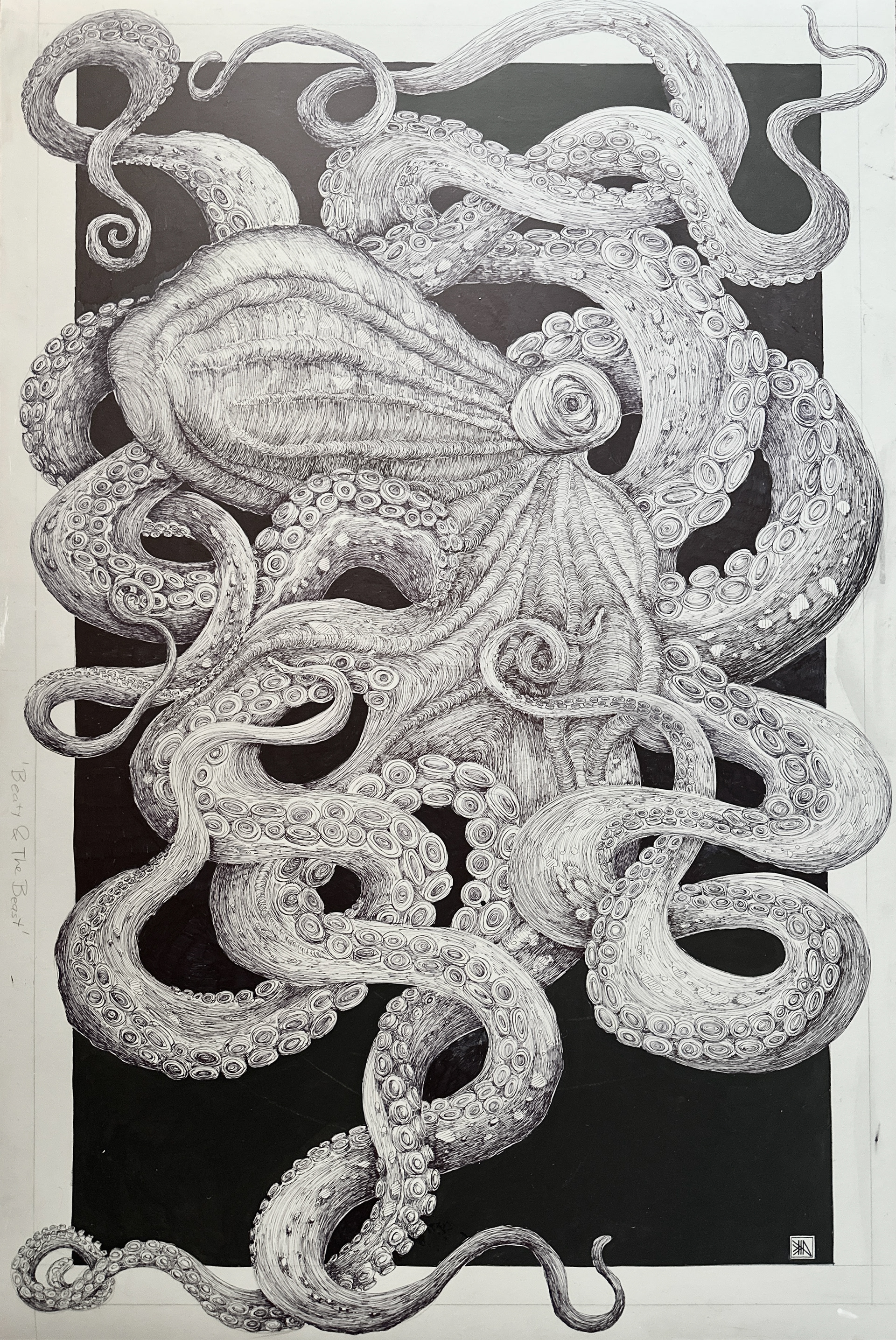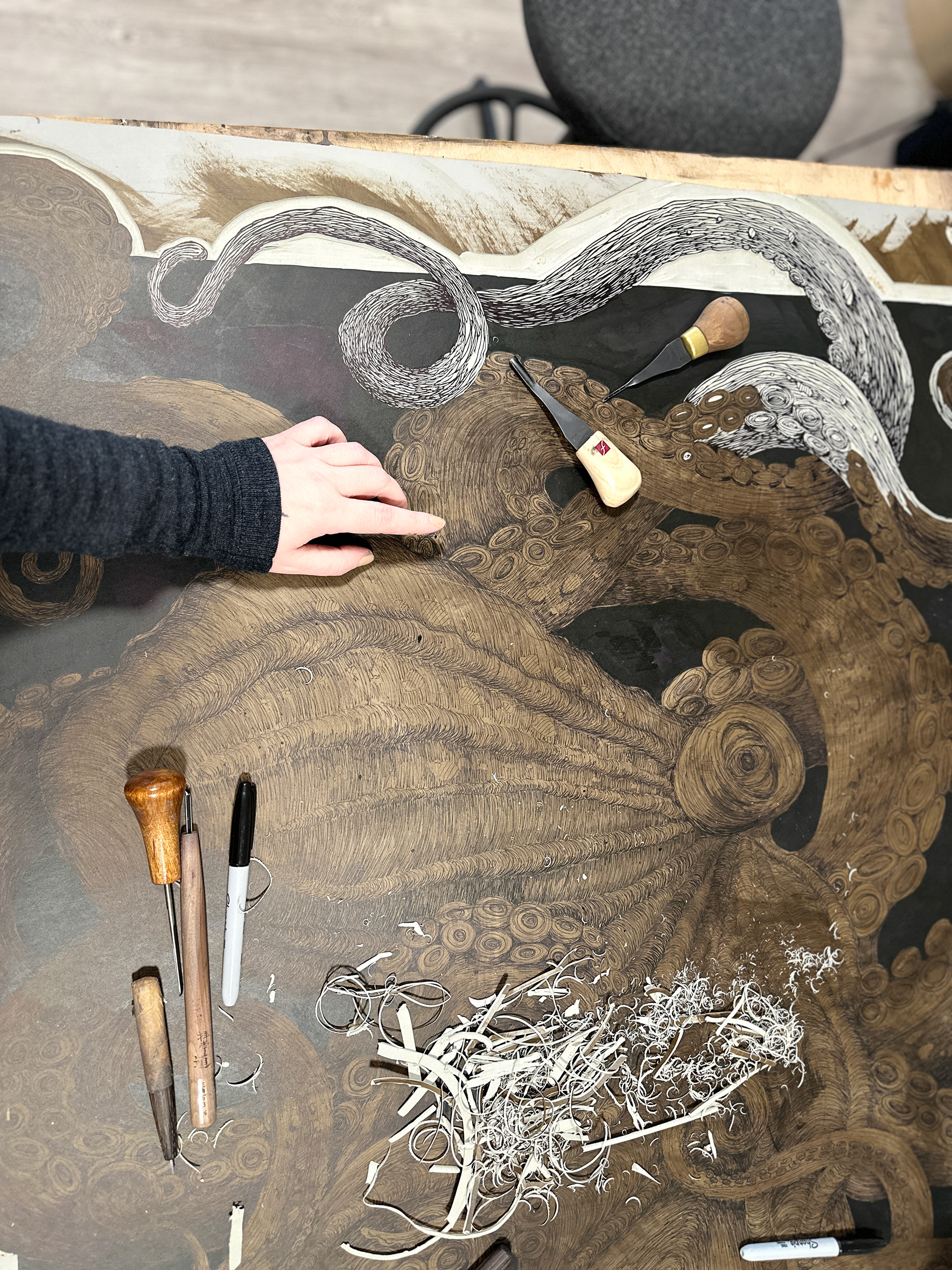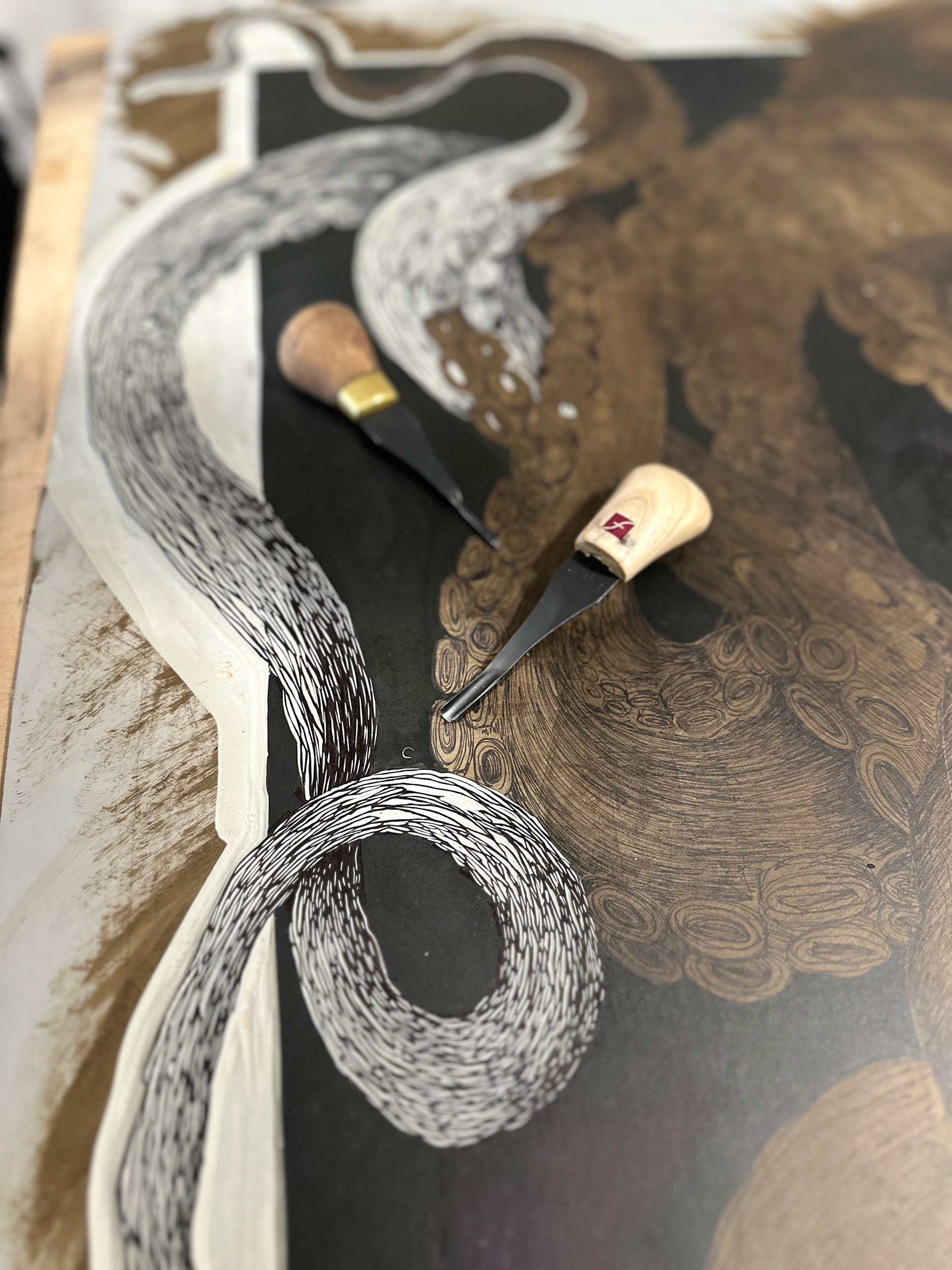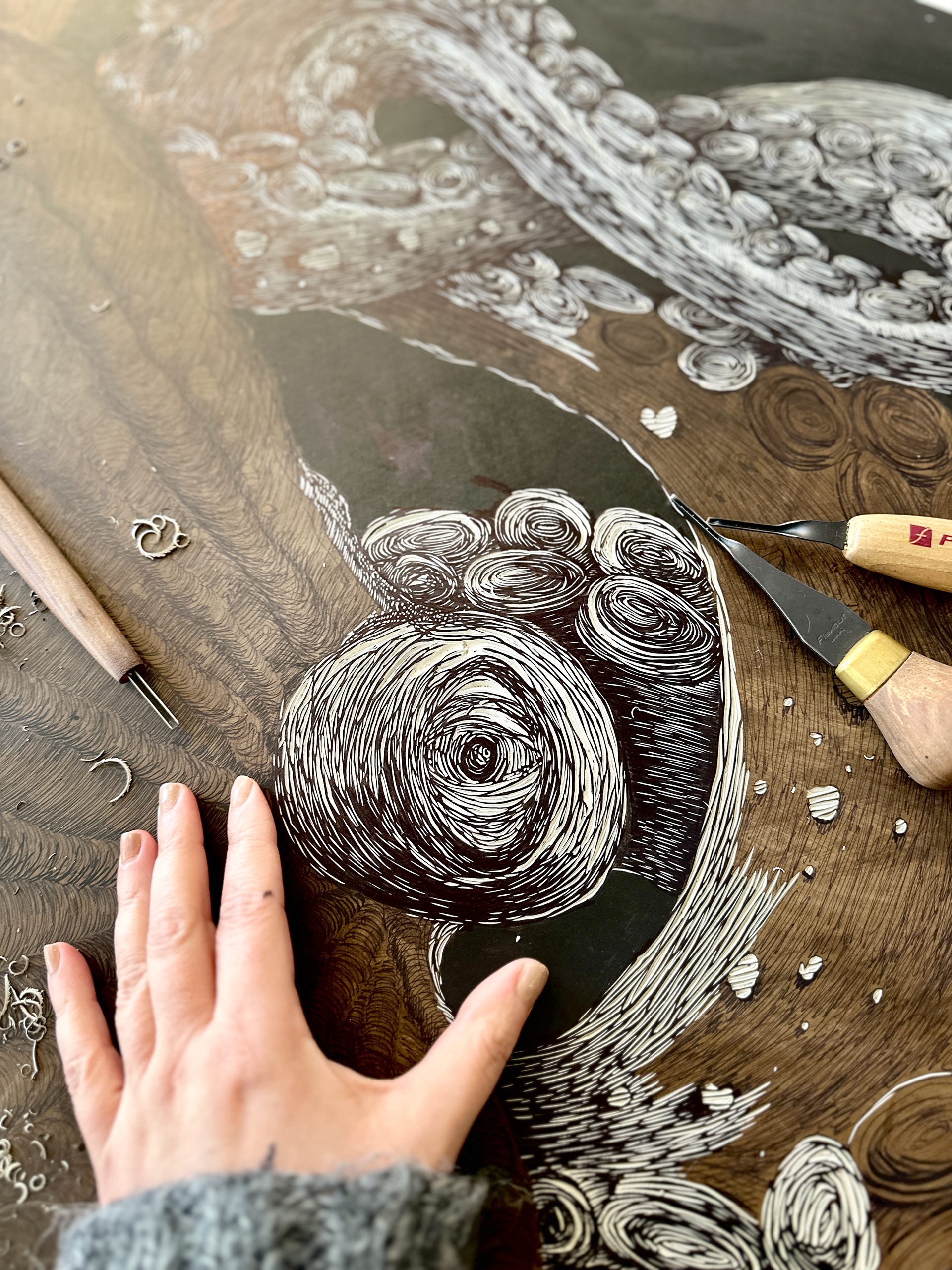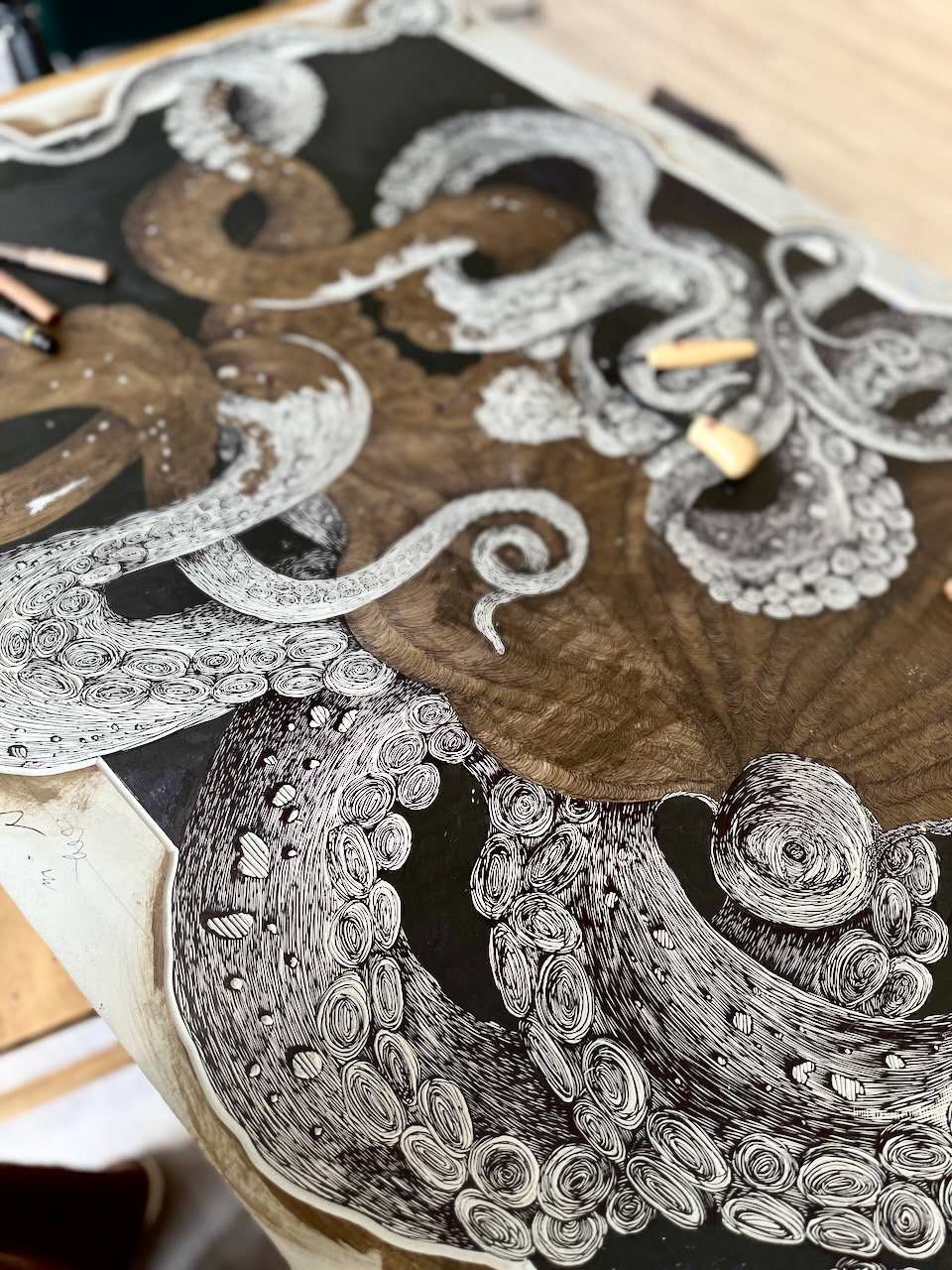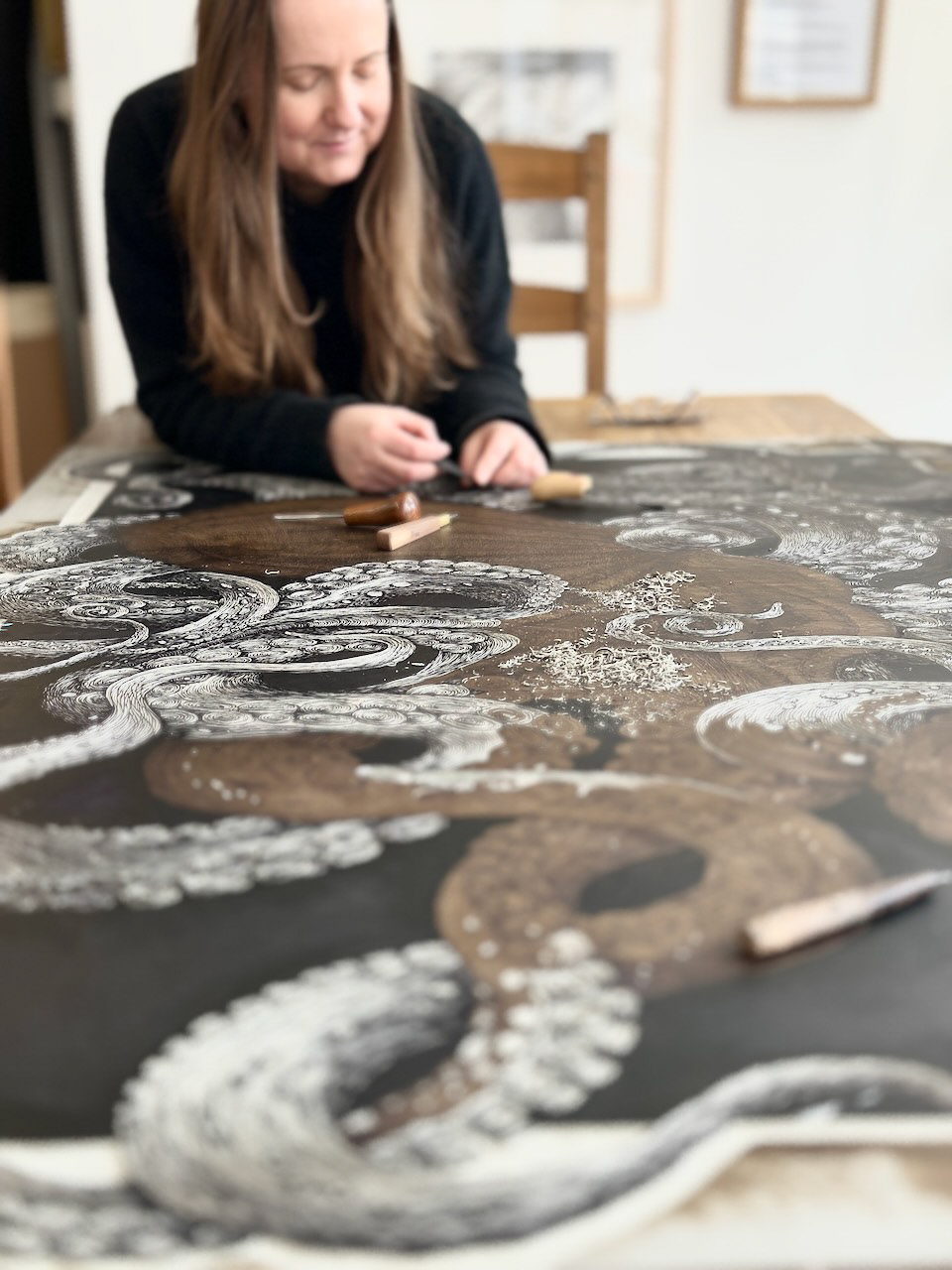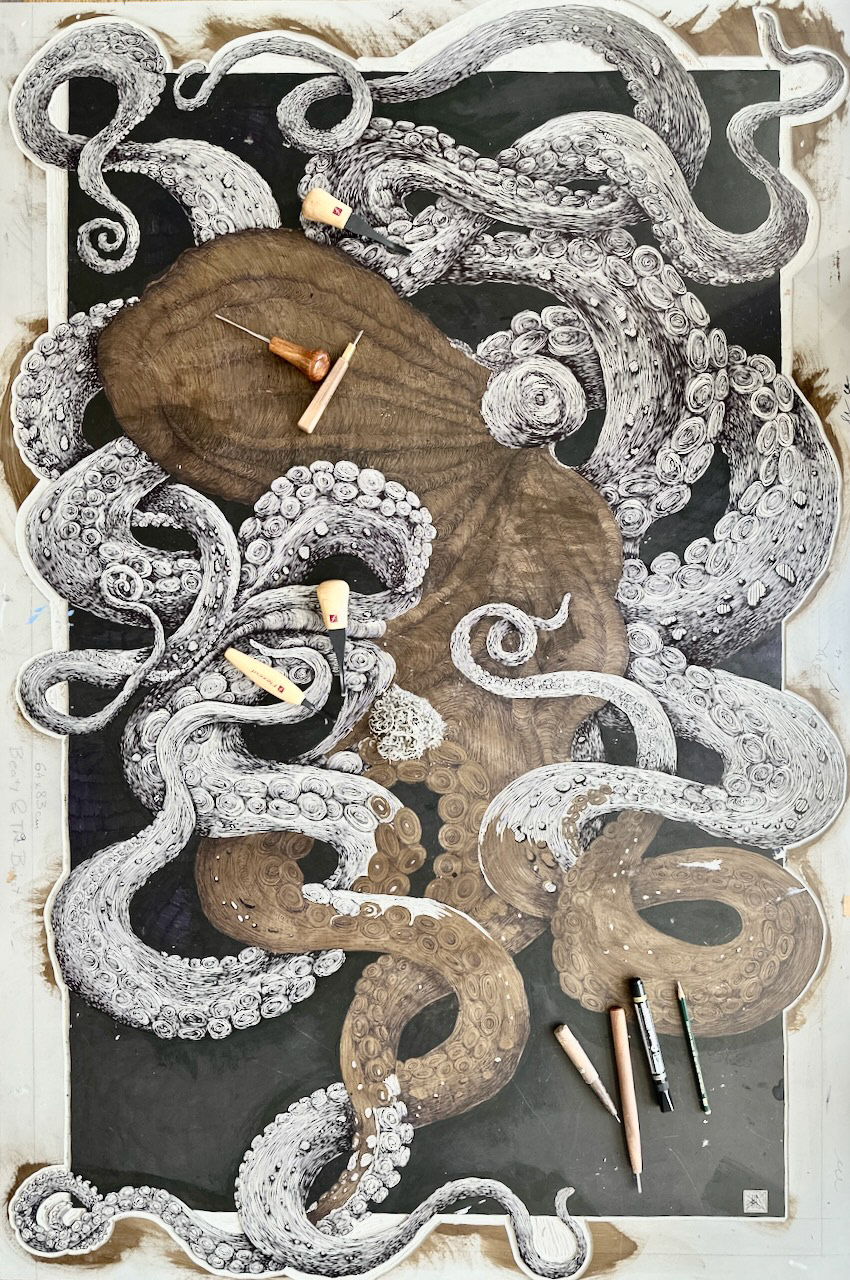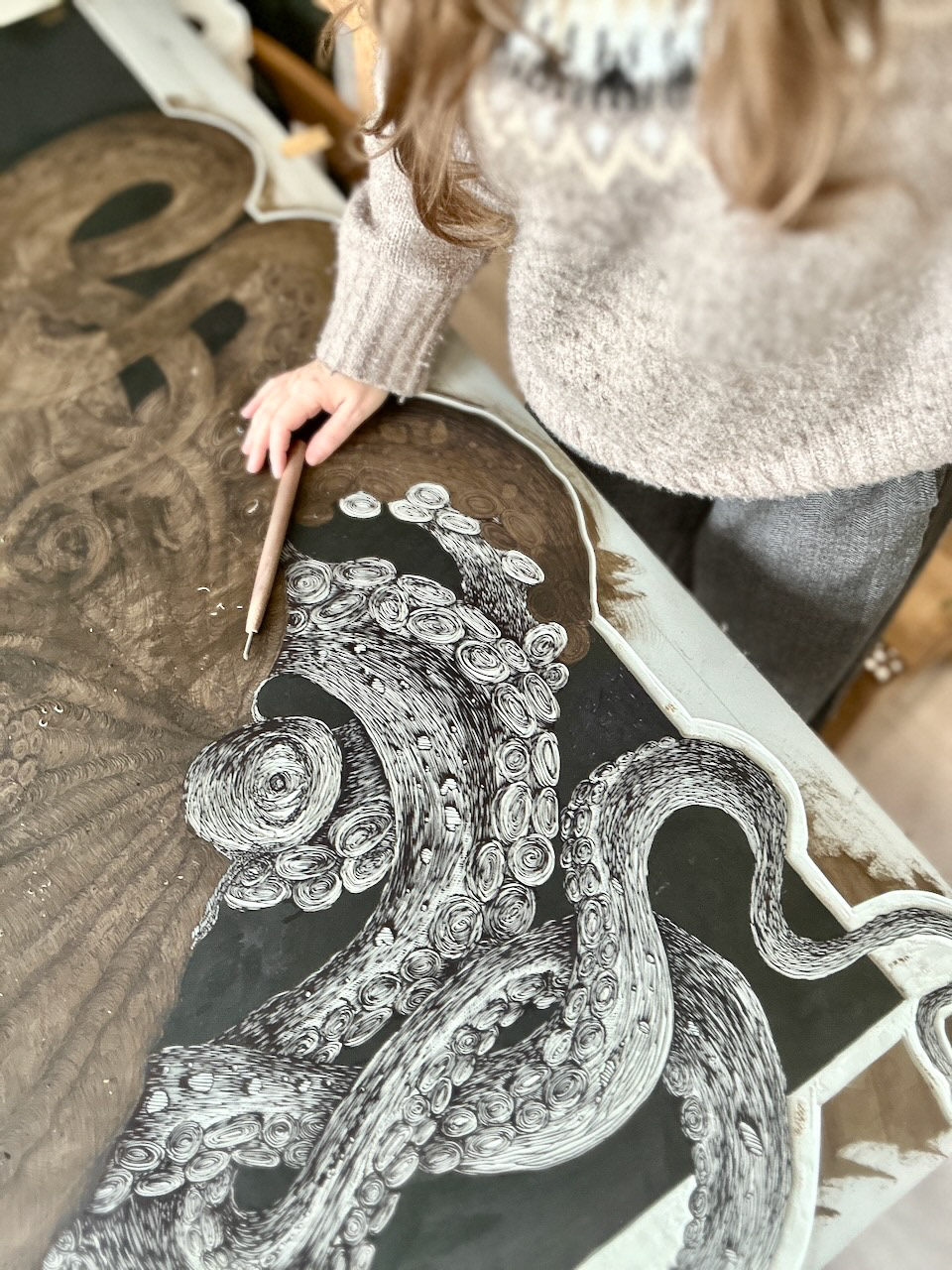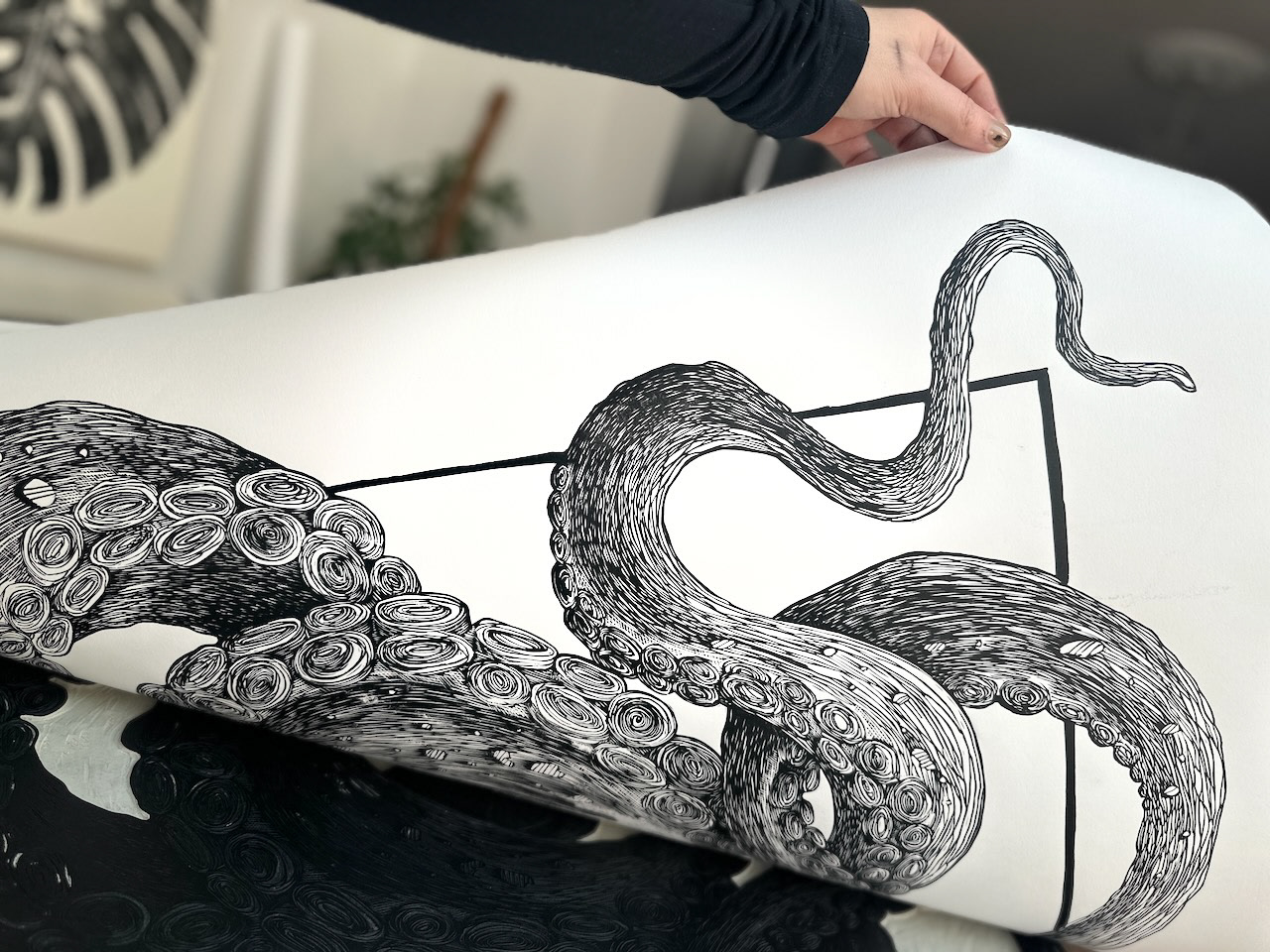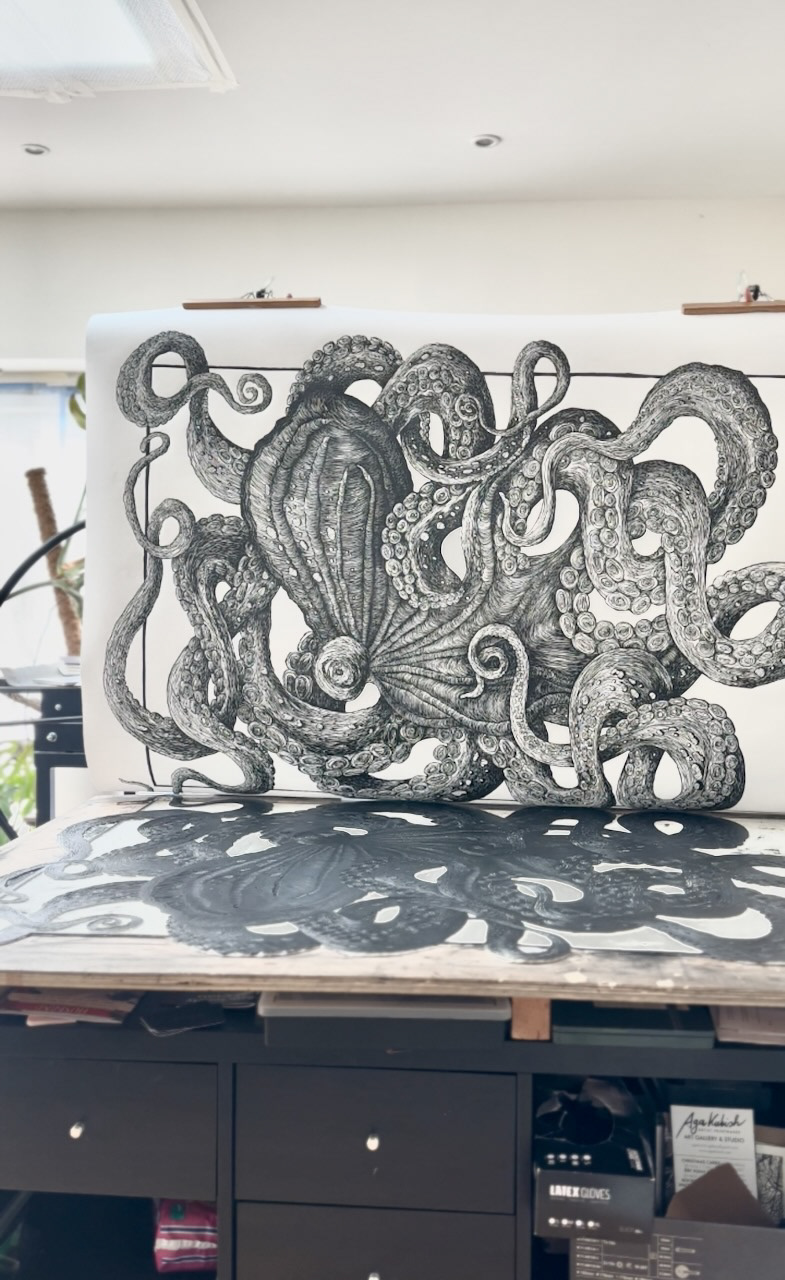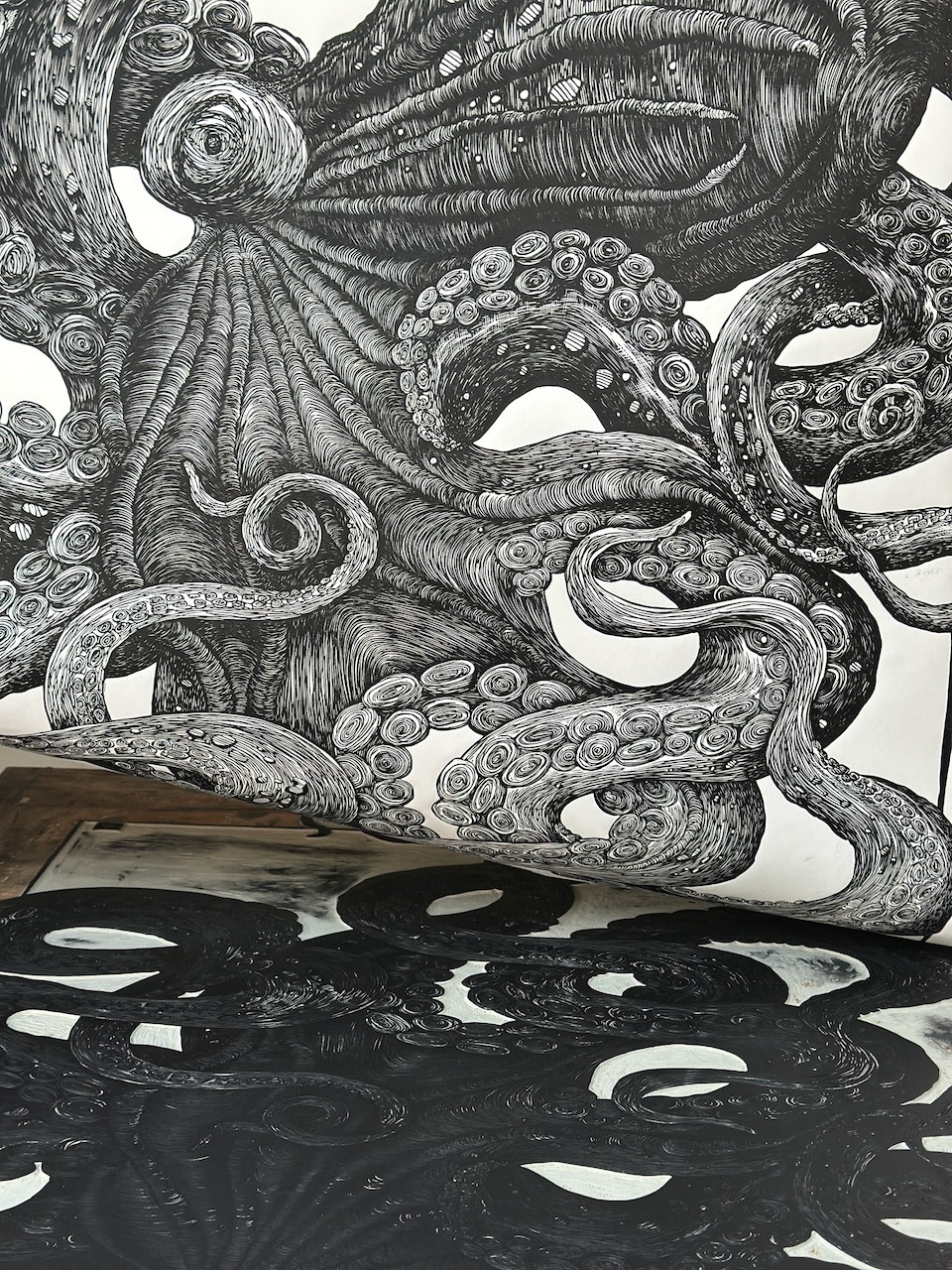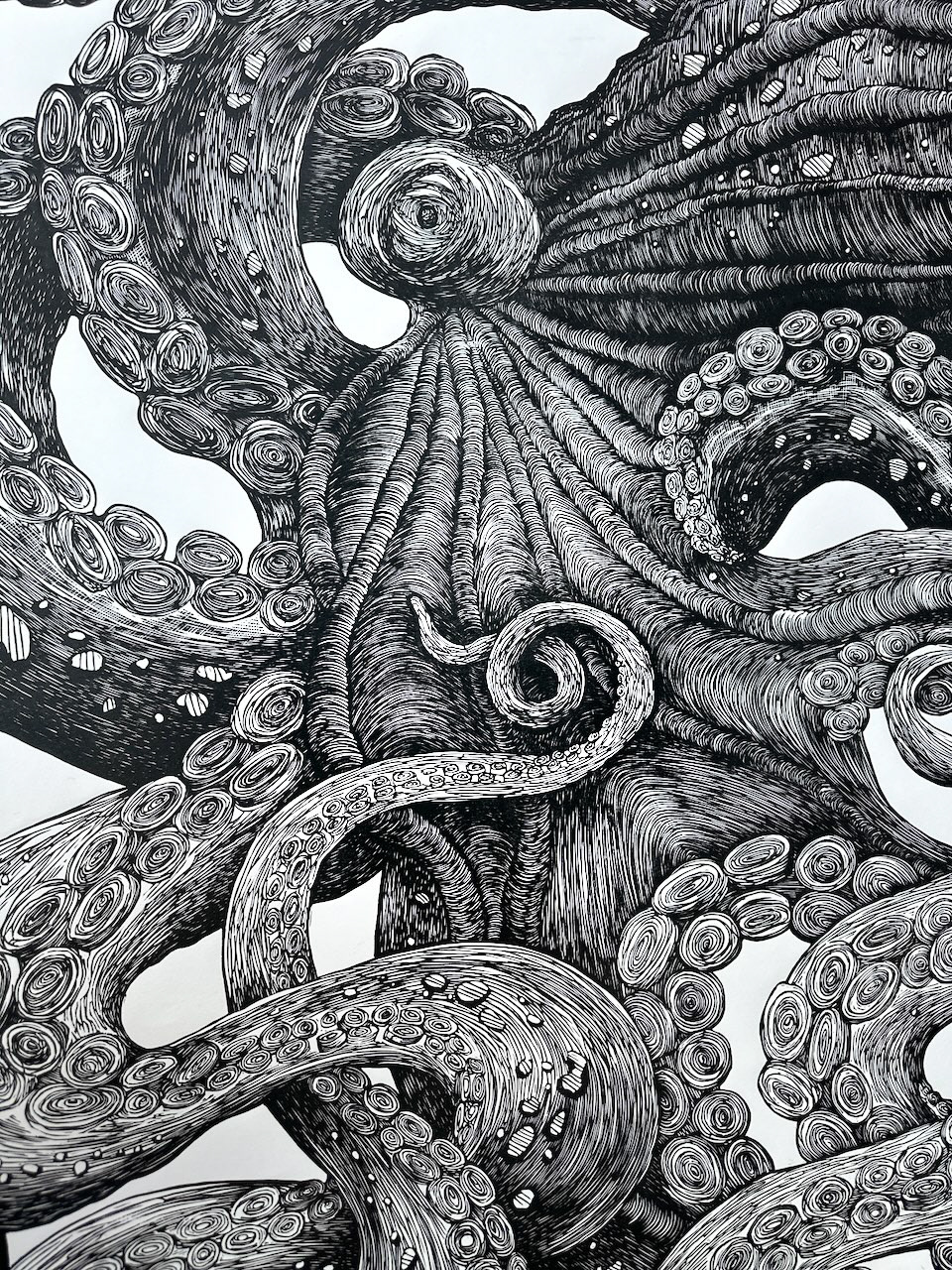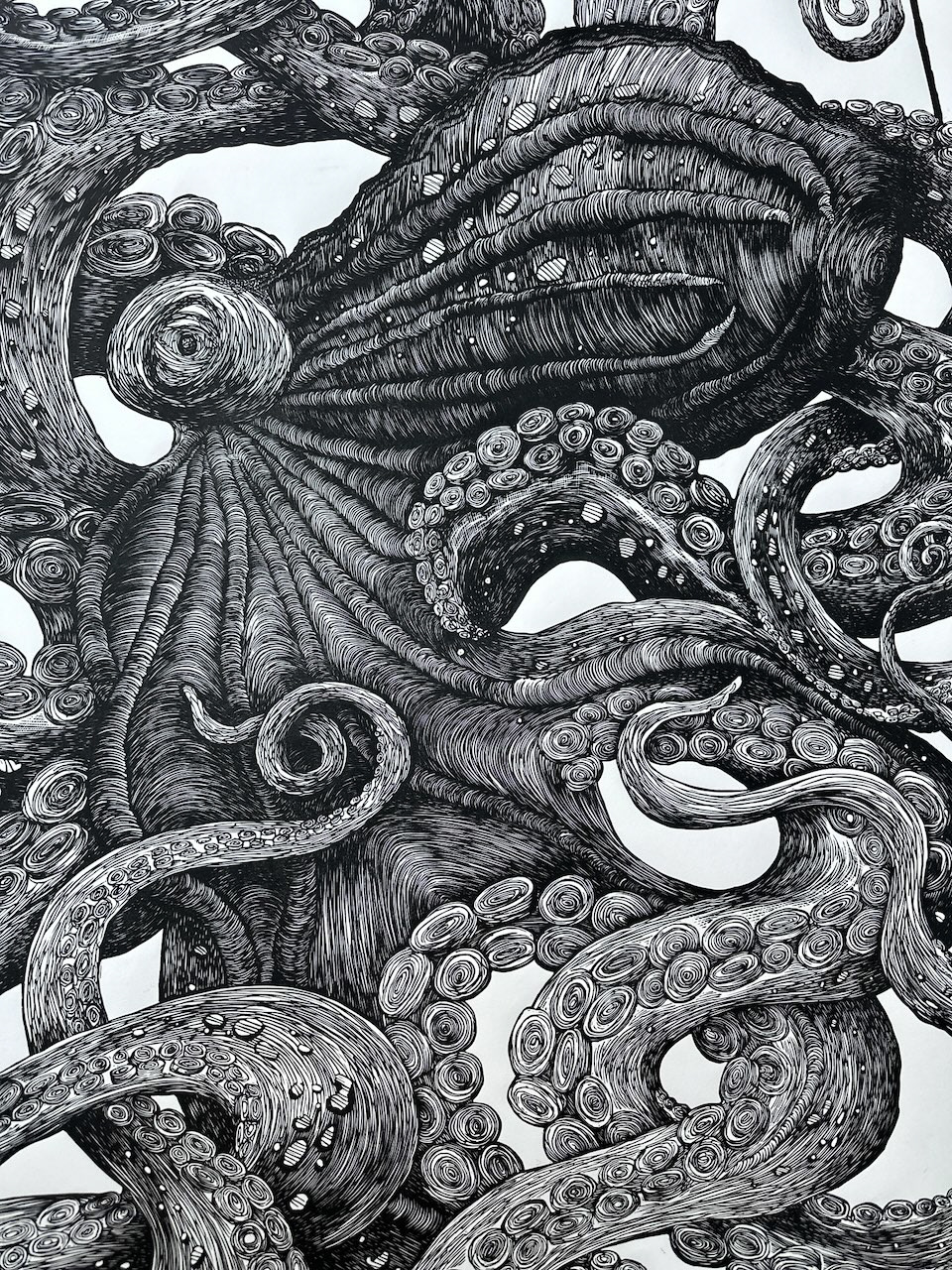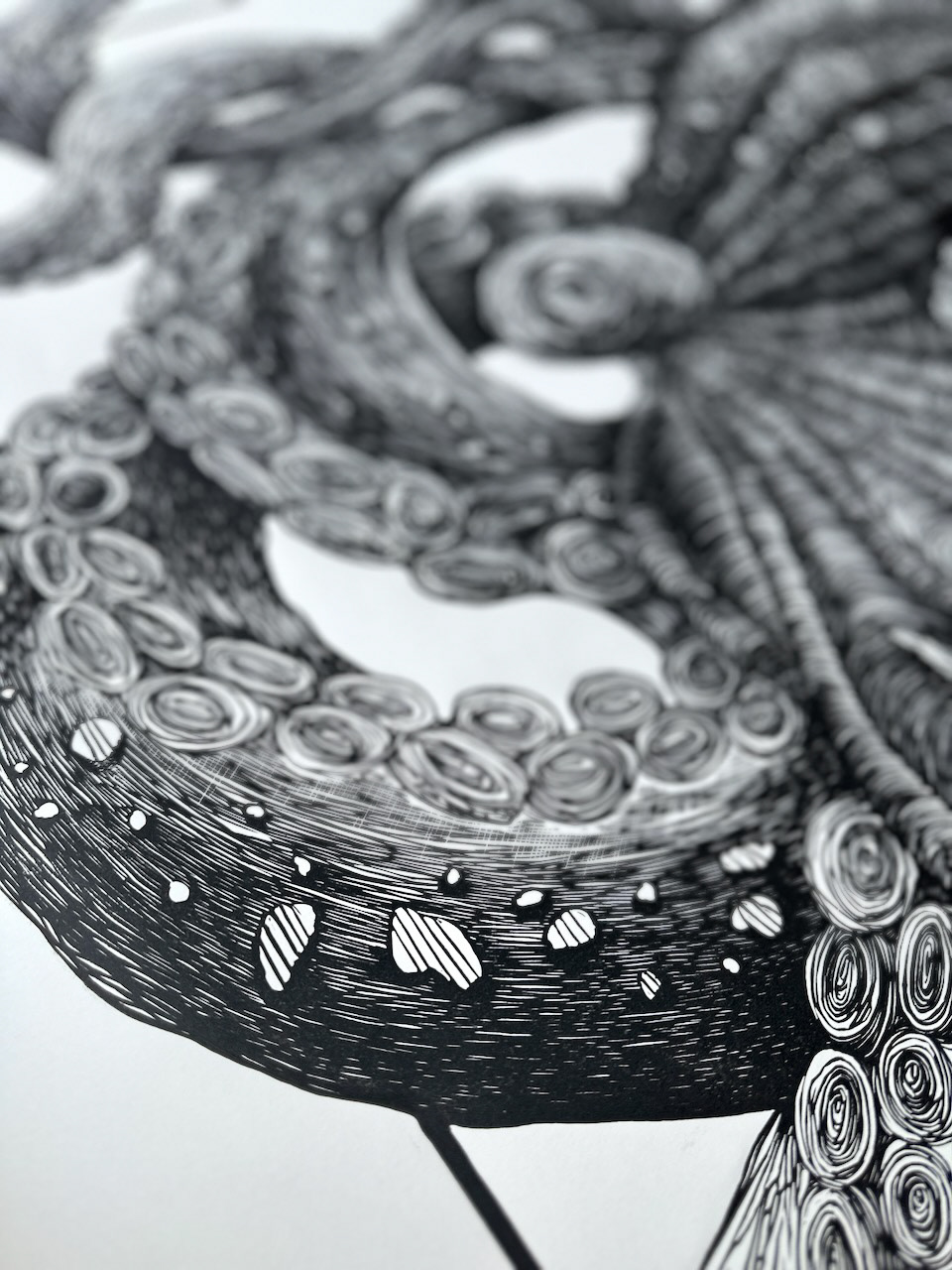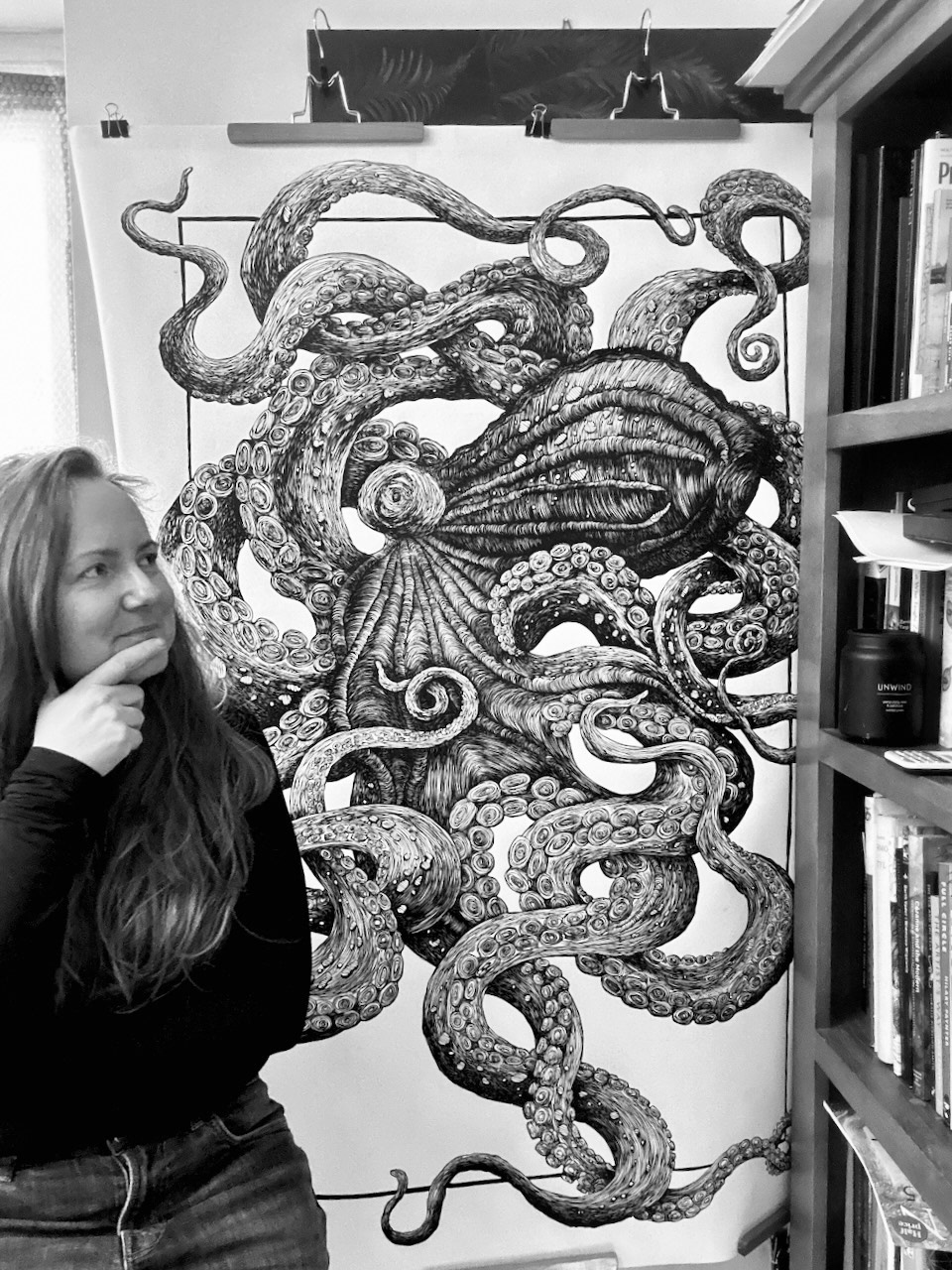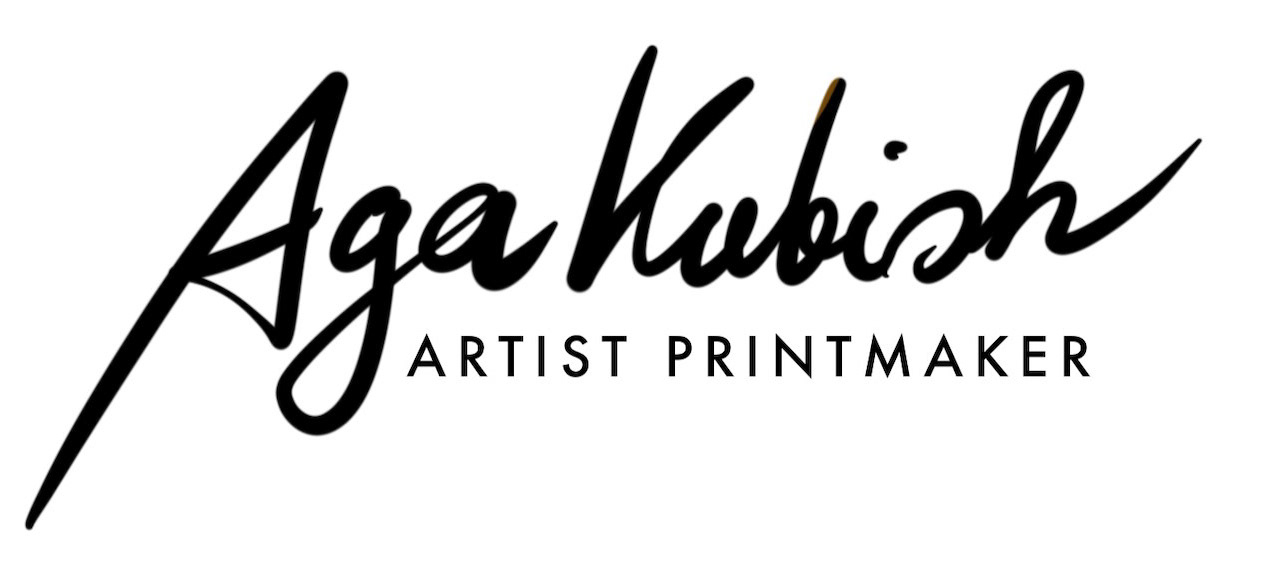
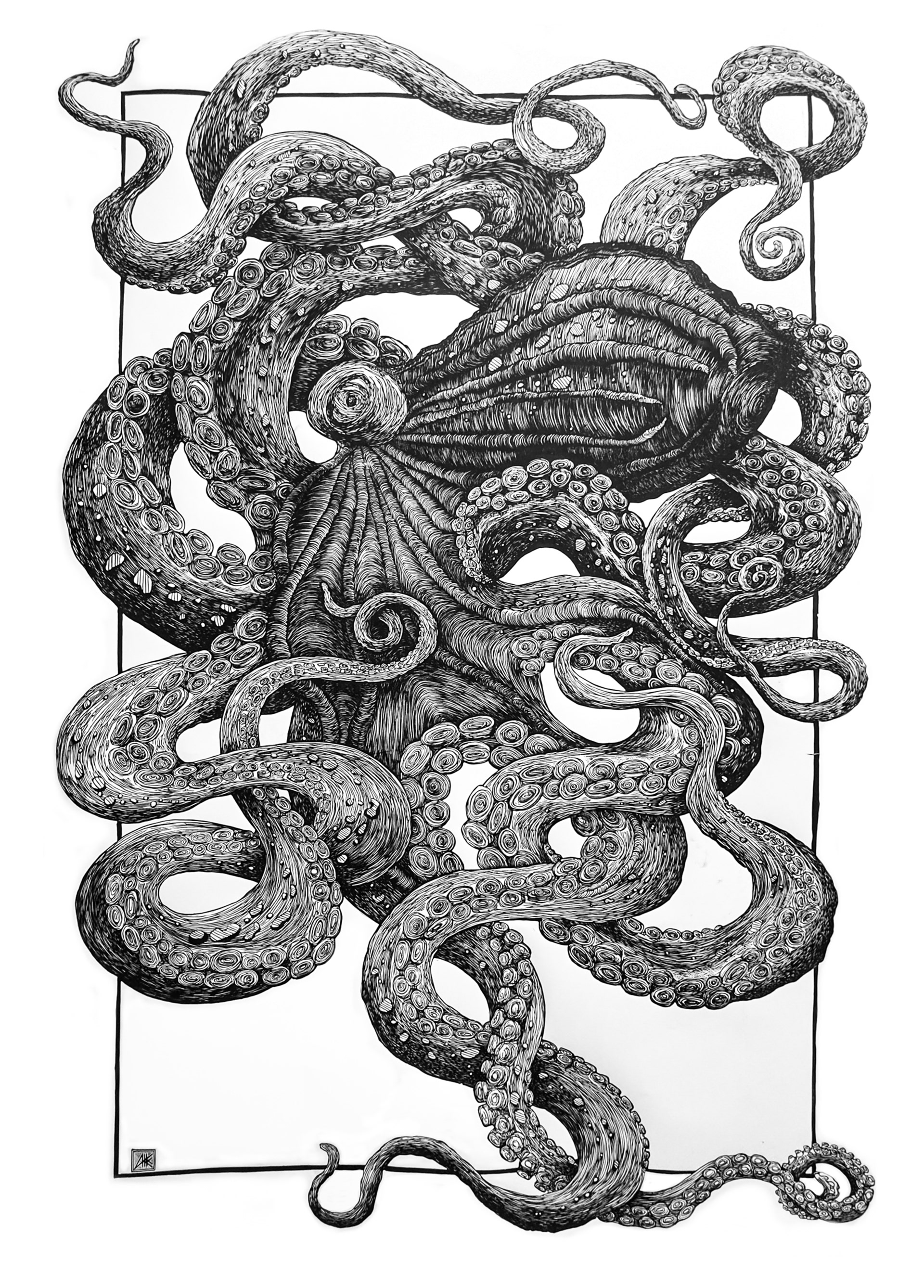
'Giant OCTOPUS II'
Large Linocut Print in progress. The lino block size 140x90cm, planned paper size 150x105cm.
The composition of new 'Giant Octopus II' project features interwoven octopus tentacles adorned with meticulously drawn suction cups, flowing in dynamic, organic curves. The tentacles seem to radiate outwards, creating a sense of movement and fluidity that captures the essence of the marine creature’s graceful yet commanding presence. The work focus on exceptional precision, with fine lines and textures that evoke both realism and stylized interpretation.
Artistic Style and Historical Context
This design aligns with the tradition of linocut printmaking, which emphasizes strong contrasts, bold lines, and intricate details due to the carving medium. The style is reminiscent of the Art Nouveau movement, known for its flowing organic lines, decorative motifs, and nature-inspired themes. The curvilinear forms and harmonious composition bring to mind the works of artists like Alphonse Mucha or the woodblock prints of the Japanese ukiyo-e tradition, which often portrayed fluid, natural forms such as waves or flora.
Linocut as a medium also harks back to the early 20th century, where it became a favored technique among expressionists like Erich Heckel and Käthe Kollwitz, who used it for its immediacy and ability to convey texture and emotion. The depiction of the octopus, a creature long associated with mystery and complexity in art and mythology, suggests a nod to natural history illustration, which flourished in the 18th and 19th centuries with the detailed studies of marine life by Ernst Haeckel.
Linocut as a medium also harks back to the early 20th century, where it became a favored technique among expressionists like Erich Heckel and Käthe Kollwitz, who used it for its immediacy and ability to convey texture and emotion. The depiction of the octopus, a creature long associated with mystery and complexity in art and mythology, suggests a nod to natural history illustration, which flourished in the 18th and 19th centuries with the detailed studies of marine life by Ernst Haeckel.
Interpretations:
The octopus often symbolizes intelligence, adaptability, and mystery. Its many tentacles could be interpreted as representing multifaceted challenges or connections, evoking themes of resilience or complexity.
The swirling tentacles could signify motion, transformation, or the fluidity of life. The spiraling forms may represent cycles, such as the ebb and flow of tides or the continuity of nature.
The highly detailed suction cups and rhythmic movement of the tentacles contrast with the chaotic intertwining forms, perhaps reflecting a balance between chaos and control.
The work itself highlights the artist’s dedication to precision and patience, qualities central to linocut. It may also suggest a meditative process, as carving such detailed patterns requires intense focus and care.
Aga has been inspired by both the physicality and symbolic richness of the octopus, as well as the challenge of translating such a complex and fluid subject into the structured process of printmaking.
The swirling tentacles could signify motion, transformation, or the fluidity of life. The spiraling forms may represent cycles, such as the ebb and flow of tides or the continuity of nature.
The highly detailed suction cups and rhythmic movement of the tentacles contrast with the chaotic intertwining forms, perhaps reflecting a balance between chaos and control.
The work itself highlights the artist’s dedication to precision and patience, qualities central to linocut. It may also suggest a meditative process, as carving such detailed patterns requires intense focus and care.
Aga has been inspired by both the physicality and symbolic richness of the octopus, as well as the challenge of translating such a complex and fluid subject into the structured process of printmaking.
『巨大なタコ II』
大型リノカット版画。リノ版のサイズは140×90cm、予定紙サイズは150×100cm。
新作『巨大なタコ II』プロジェクトの構図は、細密に描かれた吸盤を持つ絡み合うタコの触手が特徴で、躍動感と有機的な曲線で流れるように描かれています。触手は外側へ放射状に広がり、海洋生物の優雅でありながらも堂々とした存在感を見事に捉えています。本作は、細かな線と質感に焦点を当て、写実性とスタイライズされた解釈を融合した、卓越した精密さを追求しています。
大型リノカット版画。リノ版のサイズは140×90cm、予定紙サイズは150×100cm。
新作『巨大なタコ II』プロジェクトの構図は、細密に描かれた吸盤を持つ絡み合うタコの触手が特徴で、躍動感と有機的な曲線で流れるように描かれています。触手は外側へ放射状に広がり、海洋生物の優雅でありながらも堂々とした存在感を見事に捉えています。本作は、細かな線と質感に焦点を当て、写実性とスタイライズされた解釈を融合した、卓越した精密さを追求しています。
